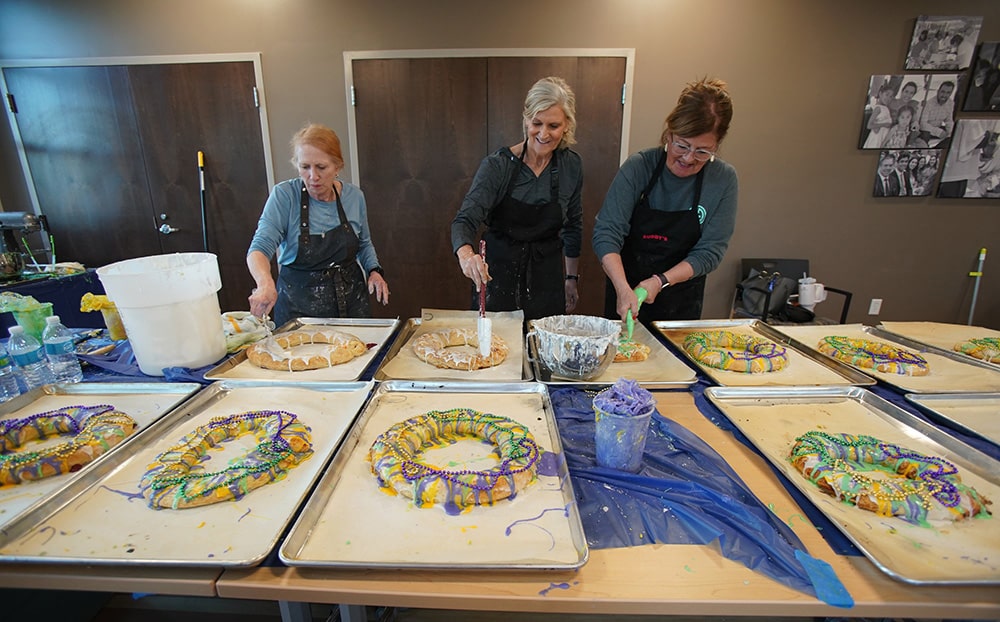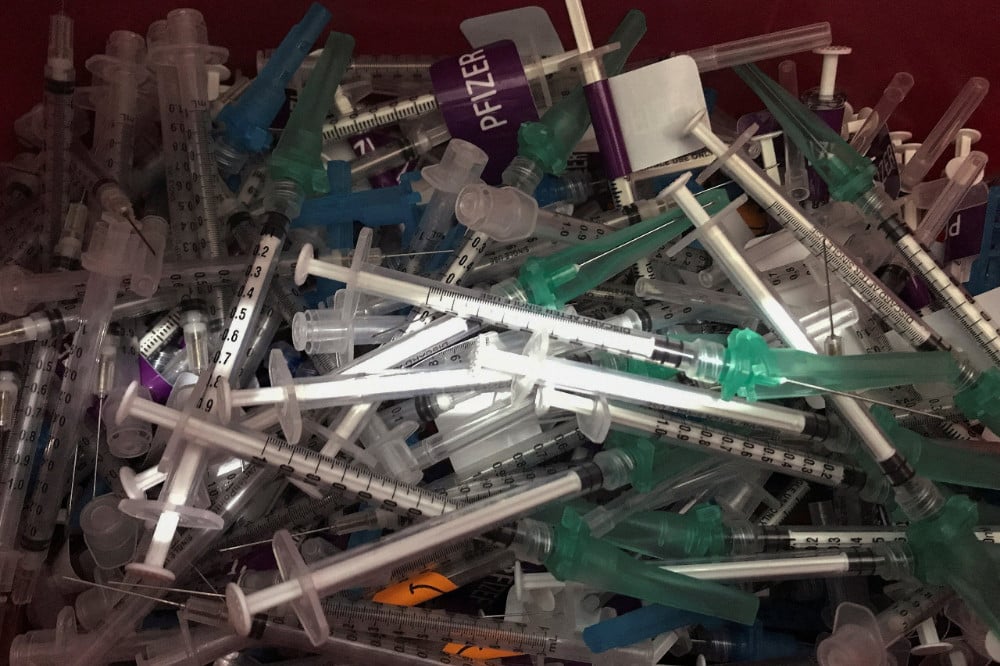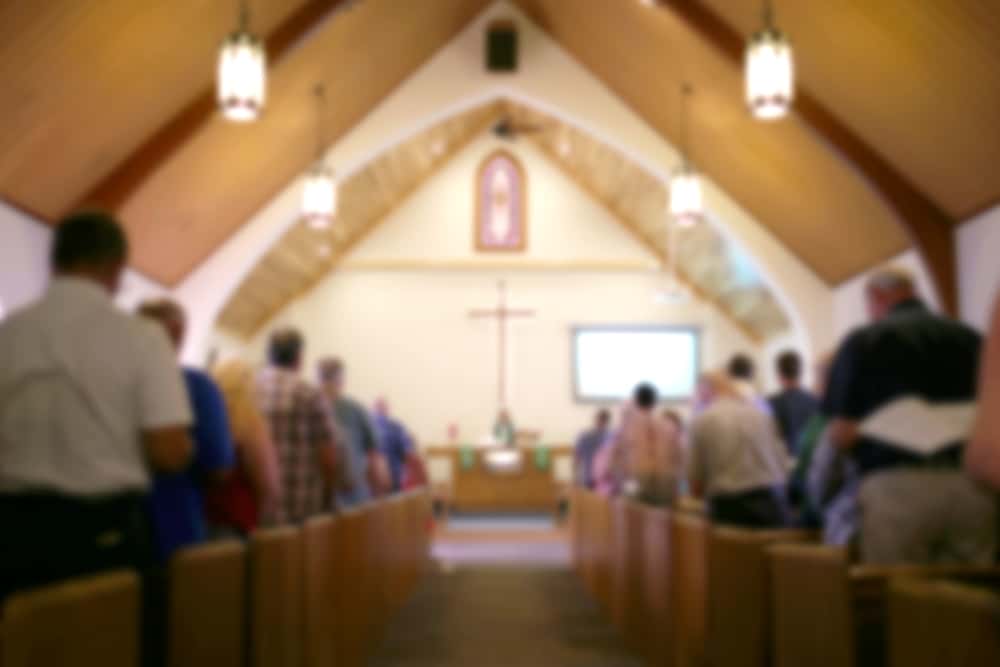WASHINGTON (CNS) — Chalk up something else affected by the coronavirus: fundraising for Catholic entities of all kinds.
Domestically, parish collections are down more than they are up. According to Ministry Brands, 64% of U.S. parishes indicated they had received a federal Paycheck Protection Program loan to meet payroll shortfalls caused by the lack of Masses, the number of people attending them and the resultant drop in offertory giving.
Some U.S dioceses have had to retrench, since a healthy percentage of their own revenue comes from an assessment on parish collections. In some cases, people are laid off or converted to part-time status, open positions go unfilled, and there’s a hiring freeze. Some ministries are slashed, and others are gone entirely.
But a July online survey of 1,079 donors revealed that 85% who gave at least $1,000 in 2018 or 2019 to a faith-based nonprofit say they expect to give the same amount or more this year as they did last year.
The median amount respondents had given previously was $20,000. Only 8% said they plan to shift their giving to other causes or nonprofits because of the pandemic, according to the North Carolina-based consultancy DickersonBakker, whose survey had a margin of error of plus or minus 3 percentage points.
On the international scene, a slightly different picture emerges.
The German Catholic press agency KNA reported in October that donations to major relief organizations in Germany rose 11.6% in the first half of 2020, according to a survey by the German Central Institute for Social Issues. Of the 30 organizations queried, 21 reported a rise in donations, while nine reported a decrease.
In the man-bites-dog-so-it-must-be-news category, contributions to the Catholic Near East Welfare Association are up. But there’s a catch. “The reason why there’s a surge in activity is because of COVID,” said Michael J. La Civita, CNEWA’s communications director.
“Even though the church, like basically every other institution for the most part, shut down, the work of the church could not: health care facilities, care for the elderly, people reaching out and looking for social service assistance where there is none, particularly in the developing world. … They turn to the church for help,” La Civita said.
“While churches could not hold liturgies and other events, reaching out and helping the poor, helping those in need — particularly those impacted by COVID — the church could and did respond” to this, he explained.
“The pope earlier this year, I guess in June, had asked the Congregation for the Eastern Churches to launch a campaign to assist those churches in its jurisdiction: North Africa, the Middle East, India, Eastern Europe. We said sure, and they in turn asked us to do it.”
La Civita said, “With that sort of a mandate and the with needs being so clear and the church’s commitment to reaching out to those most in need, those most vulnerable, those most marginalized, we made that appeal in any way that we could … through direct mail, through social media, you name it.”
“Catholics — and that’s our primary audience — North American Catholics responded very generously, very generously,” he said. “So there’s that, and the crisis of Lebanon in early August,” he added, when a massive accidental explosion rocked the capital of Beirut, “which exacerbated or blew the cap off what everyone knew: that Lebanon was in a free fall.”
“The thing that changed for us was when the thing happened in Beirut,” agreed Ed Clancy, director of outreach for Aid to the Church in Need.
“Within 24 hours, we sent immediate aid to purchase food. It has increased as time has gone on,” Clancy told Catholic News Service.
“The area that was affected by the blast is one of the principal Christian areas of Beirut. It could be that as much as 30% of the Christian population is affected. It could be that 100 — there’s no true statistical thing — but 100 families a day or more are leaving. I can’t vouch for that, other than we’ve heard this said by people on the ground.
“The other challenge was after the blast, speculators were going in and offering cash for apartments or homes, looking to just buy the property,” Clancy continued. “The issue is the old adage: Real estate is one thing you can’t make more of. If you sell it, for all intents and purposes you’re gone.”
“We want to keep people there” in Beirut to maintain a Christian presence in the Middle East, he said, but “it’s a challenge.”
“We went from additional emergency aid to more substantives, helping people to survive, to get by,” he said. “We’re looking forward to helping them rebuild — not necessarily building anything, but allowing it to happen,” all while supplying food, clothing and job retraining in the middle of a pandemic.
When the pandemic started, “there was a big drop” in donations, Clancy said.
“It’s still down for sure. The mail activity has diminished, that’s for sure. Is it people not responding to mail, or people not wanting to go outside? I’m sure economic activity is a consideration, too,” he said.
“Amazingly, our small donors — the widows, the widow’s-mite people — didn’t stop. They may have changed their donation from $20 to $15, but they didn’t stop,” Clancy added.
The Pontifical Mission Societies saw the same drop off in mailed contributions since the start of the pandemic, according to communications director Monica Yehle. This prompted a pivot to its website, missio.org, to raise funds.
“It has raised and continued to raise money for projects … but it also includes general giving. We have increased the digitization,” she said. The good news: “We saw an uptick so far digitally this Mission Month, in October.”
One year’s fundraising pays the following year’s projects, Yehle told CNS; the 2019 fundraising was distributed this year with no problems. The question remains as to how much money will be raised in 2020 to disburse in 2021.
“The big, big parish collection every year for World Mission Sunday just took place the 18th of October, so it’s difficult to tell how that actually went,” she said.
Showing how you can get by with a little help from your friends, Yehle noted how diocesan Society for the Propagation of the Faith directors coordinate the Mission Cooperation Plan in the summer months, with missionary priests visiting U.S. parishes for a weekend to help raise consciousness — and funds.
“As you can imagine, the pandemic stopped that program. Missionaries were unable to travel here. Parishes weren’t able to open, or certainly not at that capacity,” Yehle said.
So The Pontifical Mission Societies offered missio.org to help missionary priests raise money. The missioners’ webpages were open through September, but shut down in October for Mission Month, but are reopening in November through the end of 2020.
Yehle said, “I think the pandemic is teaching us all that we have to adapt.”





